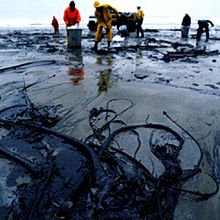Oil Industry Environmental Issues
Since the late 1980s, when the current tide of environmental concern began to rise, every improvement made by the oil industry has been followed by new demands for further progress. New problems have been placed on top of the old ones; first smog in the inner cities and oil spills on the beaches, then acid rain and forest die back followed by major tank disasters and renewed attention to urban air quality and finally, climatic change. The purpose of this book is to investigate whether the oil industry is able to extend and renew its social legitimacy as it faces its toughest agenda in a century the challenges stemming from its impact on the environment and the consequent public questioning of its role in society. To find out whether and how the oil industry has responded to environmental issues in general and climatic change in particular, five indicators of change vision & image, R&D, investments, and government relations have been selected. These have been assumed to be expressions of an environmental strategy which can be identified as reactive, cautious or creative. The empirical analysis begins with case studies of the environmental response of five major oil companies: Shell, Exxon, BP, Amoco and Statoil. The next step is a case study of the refinery sector, which is the most environmentally sensitive part of the industry in many ways. In addition, a brief description of how three industry associations have tackled the same environmental issues is included. The main readership for this book will be policy makers, planners and researchers in the oil industry, and environmental consultants.










